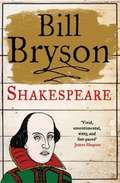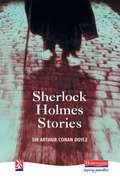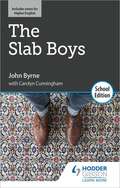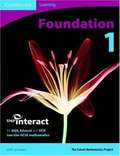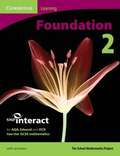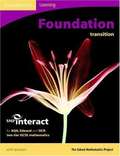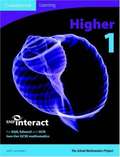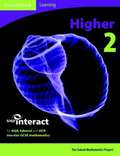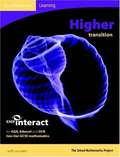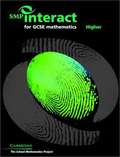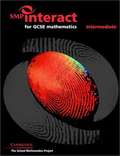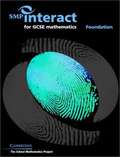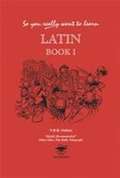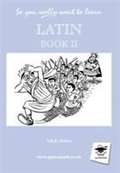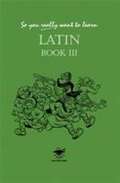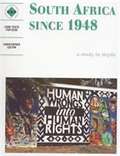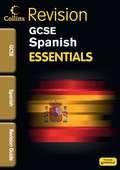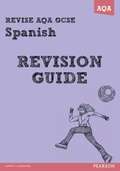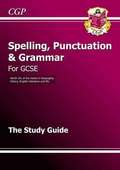- Table View
- List View
Shakespeare: The World as a Stage (PDF)
by Bill BrysonIn this much anticipated addition to the Eminent Lives series, Bill Bryson's biography of William Shakespeare unravels the superstitions, academic discoveries and myths surrounding the life of our greatest poet and playwright. Shakespeare's life, despite the scrutiny of generations of biographers and scholars, is still a thicket of myths and traditions, some preposterous, some conflicting, arranged around the few scant facts known about the Bard - from his birth in Stratford to the bequest of his second best bed to his wife when he died. Following his international bestsellers A Short History of Nearly Everything' and The Life and Times of the Thunderbolt Kid', Bill Bryson has written a short biography of William Shakespeare for the Eminent Lives series - which seeks to pair great subjects with writers known for their strong sensibilities and sharp, lively points of view.
Sherlock Holmes Short Stories (PDF)
by Arthur Conan DoyleThis edition of the Sherlock Holmes short stories is one of a series consisting of unabridged versions of 19th-century classics, with introductions, glossaries, and activities for individuals, pairs and groups.
Similarity
This diagram consists of two pairs of similar shapes; the two in the middle of the page are similar and the bottom two are also similar. A locator dot and title are shown. These must always be at the top left of the page when the image is the right way up. Similarity is a type of enlargement. The corresponding sides are in the same ratio - the ratio is the scale factor of the enlargement.
Similarity
This diagram consists of two pairs of similar shapes; the two in the middle of the page are similar and the bottom two are also similar. A locator dot and title are shown. These must always be at the top left of the page when the image is the right way up. Similarity is a type of enlargement. The corresponding sides are in the same ratio - the ratio is the scale factor of the enlargement.
Similarity
This diagram consists of two pairs of similar shapes; the two in the middle of the page are similar and the bottom two are also similar. A locator dot and title are shown. These must always be at the top left of the page when the image is the right way up. Similarity is a type of enlargement. The corresponding sides are in the same ratio - the ratio is the scale factor of the enlargement.
The Slab Boys: School Edition
by John ByrneA Schools Edition of The Slab Boys by Scottish playwright John Byrne, a popular set text for SQA Higher English. A semi-autobiographical work, The Slab Boys is set in the slab room of A.F. Stobo & Co Carpet Manufacturers in Paisley and the action takes place on one day in 1957. It explores themes such as rebellion and conformity, social class and social mobility, youth, deception, and frustrated ambition and achievement.
SMP GCSE Interact 2-tier Foundation 1 Pupil's Book (PDF)
by Cambridge University PressThis series is an excellent preparation for the linear and modular mathematics GCSE specifications offered by AQA, Edexcel and OCR. The books for the Foundation tier have been especially praised for helping raise the confidence of students, who as a result have a better understanding of the mathematics and a clearer self awareness of what they've learned.
SMP GCSE Interact 2-tier Foundation 2 (PDF)
by The School Mathematics ProjectThis series is an excellent preparation for the linear and modular mathematics GCSE specifications offered by AQA, Edexcel and OCR. The books have been especially praised for helping raise the confidence of students, who as a result have a better understanding of the mathematics and a clearer self awareness of what they've learned. The book continues the confidence-building style of the preceding books, approaching the hardest topics in a straightforward way that takes account of students' known learning difficulties and matches the level of demand of the exam papers.
SMP GCSE Interact 2-tier Foundation Transition Pupil's Book (PDF)
by The School Mathematics ProjectThis series is an excellent preparation for the linear and modular mathematics GCSE specifications offered by AQA, Edexcel and OCR. The books for the Foundation tier have been especially praised for helping raise the confidence of students, who as a result have a better understanding of the mathematics and a clearer self awareness of what they've learned.
SMP GCSE Interact 2-tier Higher 1 Pupil's Book: Level 1 (PDF)
by The School Mathematics ProjectThis series is a preparation for the linear and modular mathematics GCSE specifications offered by AQA, Edexcel and OCR.
SMP GCSE Interact 2-tier Higher 2 Pupil's Book: Level 2 (PDF)
by The School Mathematics ProjectThis series is a preparation for the linear and modular mathematics GCSE specifications offered by AQA, Edexcel and OCR.
SMP GCSE Interact 2-tier Higher Transition Pupil's Book (PDF)
by The School Mathematics ProjectExcellent preparation for the linear and modular mathematics GCSE specifications offered by AQA, Edexcel and OCR. Higher transition is for students who have followed any 'core' course in key stage 3 and need to cover or revise basic topics before they start Higher 1 (the first of the two main Higher tier books).
SMP Interact For GCSE Mathematics: Higher (PDF)
by The School Mathematics ProjectSMP Interact for GCSE Mathematics has been written specifically for the new linear and modular GCSE specifications.
SMP Interact for GCSE Mathematics: Intermediate (PDF)
by The School Mathematics ProjectSMP Interact for GCSE Mathematics has been written specifically for the new linear and modular GCSE specifications.
SMP Interact For GCSE Mathematics: Foundation (PDF)
by The School Mathematics ProjectSMP Interact for GCSE Mathematics has been written specifically for the new linear and modular GCSE specifications.
So You Really Want to Learn Latin: Book 1 (PDF)
by Oulton, N. R. R.This is the first part of a no-nonsense, grammatically based Latin course which has proved immensely popular with schools since its publication in 1999. Ideal for pupils of all abilities, Book I introduces pupils to regular verbs in all six active tenses, nouns of the first three declensions, sum, adjectives of the 1st/2nd declension, prepositions, numerals and the history of Rome from Aeneas to Cloelia.
So You Really Want to Learn Latin: Book II (PDF)
by Oulton, N. R. R.Book II takes pupils through 3rd declension adjectives, personal and demonstrative pronouns, relative clauses, 4th and 5th declension nouns, the passive voice, the comparison of adjectives and adverbs, irregular verbs and the history of Rome from Coriolanus to the 2nd Punic War. A thorough grounding for pupils attempting Level 2 of Common Entrance, this book completes the essential preliminary groundwork for the GCSE course
So You Really Want to Learn Latin: Book III (PDF)
by Nicholas OultonThe third in this three part series takes pupils through all the major syntactical constructions in a thorough, systematic way, with clear explanations and suitable pasSAGE Publishings for translation. The book concludes with an introduction to the complexities of Latin scansion. Vital as a hand-book for pupils taking GCSE or preparing for Common Entrance or scholarship exams at 13+
South Africa Since 1948: A Study In Depth (PDF)
by Christopher CulpinStretch and challenge your students with SHP's longest-lived and best-selling series for GCSE History. This is an SHP Official Text which means it has been created by the Schools History Project for use with the GCSE specifications. This is part of SHP's comprehensive and authoritative range of books for the GCSE History. Click here to find out more about the Schools History Project and their award winning publications. South Africa 1948-1995 This title is a comprehensive and authoritative depth study for use with all GCSE level specifications. It thoroughly covers the content requirements of the OCR, Edexcel, AQA and CIE specifications using an enquiry-based approach. It is also a popular international text being widely used in Australia. It is written by experts who understand both how to design good teaching material but also understand the exact assessment requirements of each specification.
Spanish: Revision Guide (PDF)
by Terry MurrayThe student-friendly, uncluttered approach to GCSE revision, guides students through the core Spanish content with succinct revision notes and practice questions that focus on the essential content needed for the exams.
Spanish: Revision Guide (PDF)
by Leanda Reeves Tracy TraynorThis Revision Guide delivers exam preparation, covering one topic per page and closely matching the AQA specification. Target grades on the page help you to progress at the right speed. Exam Alerts highlight common pitfalls and misconceptions in exam questions. Audio files are available free on a companion website to provide realistic question practice.
Spelling, Punctuation and Grammar for GCSE: The Study Guide (PDF)
by Cgp BooksThis book is for anyone doing GCSE English Literature, History, Geography or Religious Studies -- but it's useful for other GCSE subjects too.
Spirometer trace (Large Print)
by RnibThis is an image of a spirometer trace. It is a multi-page image set on two pages, a key and then the diagram page. A locator dot and title are shown on both pages. These must always be at the top left of the page when the image is the right way up. Key to spirometer trace. The first page shows the abbreviations and textures used on the spirometer diagram page. The abbreviations and samples of the texture are on the left with their description on the right. Spirometer trace. The second page shows a spirometer trace: it is like a graph with the Y axis being lung volume, and the X axis being time. The trace is a thick wavy line with spikes going across the page from left to right. There are two peaks going up towards the top of the page, and two dips going down towards the bottom of the page. The diagram is labelled with abbreviations.
Spirometer trace (UEB Contracted)
by RnibThis is an image of a spirometer trace. It is a multi-page image set on two pages, a key and then the diagram page. A locator dot and title are shown on both pages. These must always be at the top left of the page when the image is the right way up. Key to spirometer trace. The first page shows the abbreviations and textures used on the spirometer diagram page. The abbreviations and samples of the texture are on the left with their description on the right. Spirometer trace. The second page shows a spirometer trace: it is like a graph with the Y axis being lung volume, and the X axis being time. The trace is a thick wavy line with spikes going across the page from left to right. There are two peaks going up towards the top of the page, and two dips going down towards the bottom of the page. The diagram is labelled with abbreviations.
Spirometer trace (UEB Uncontracted)
by RnibThis is an image of a spirometer trace. It is a multi-page image set on two pages, a key and then the diagram page. A locator dot and title are shown on both pages. These must always be at the top left of the page when the image is the right way up. Key to spirometer trace. The first page shows the abbreviations and textures used on the spirometer diagram page. The abbreviations and samples of the texture are on the left with their description on the right. Spirometer trace. The second page shows a spirometer trace: it is like a graph with the Y axis being lung volume, and the X axis being time. The trace is a thick wavy line with spikes going across the page from left to right. There are two peaks going up towards the top of the page, and two dips going down towards the bottom of the page. The diagram is labelled with abbreviations.
